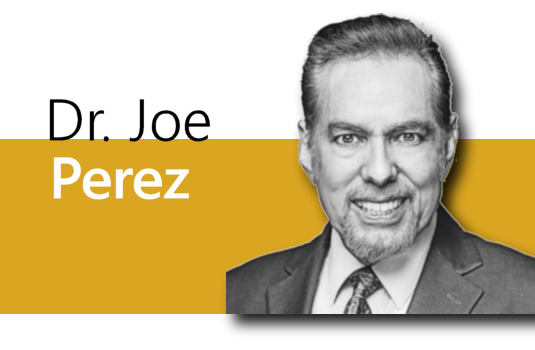
Copyright Or Copywrong? AI’s Intellectual Property Conundrum
A few months ago, a marketing firm made a multinational campaign with AI-generated visuals & wording. The result was packed with images that stood out, impactful messages, and in a short time. However, when a rival used the AI-generated parts in a new campaign, the firm’s legal team identified a problem: the work lacked copyright protection, making enforcement nearly impossible.
It is no longer a theoretical situation. A recent United States Copyright Office report, “Copyright and Artificial Intelligence, Part 2: Copyrightability,” shows that copyright law is undergoing much testing about whether or not the stuff being generated by AI can legally be called copyrightable. As businesses today leverage AI-driven creative processes and are advancing in the development of AI technologies, there is one big question that has to be addressed: who owns what?
Findings from the Copyright Office Report
AI-generated works and data analysis are the focus of the latest Copyright Office report. Key takeaways include:
- No Copyright Without Human Authorship: The report states that AI-generated works need human authorship to obtain copyright protection when significant creative human participation occurs. The position takes its basis from the Thaler v. Perlmutter legal decision. The Thaler v. Perlmutter ruling established that AI-generated art lacks the capacity to receive copyright protection from registration.
- Case-by-Case Assessment: The Office requires organizations to assess copyrightability through evaluations of the level of human creative input in AI-generated works.
- Global implications: The report recognizes international variation and while some jurisdictions (like China) may lack protection of AI-generated works, the US is yet resolute in the human authorship requirement.
- The business considerations: The findings suggest that businesses are encouraged to examine their dependence on AI in the creative realm and how to meet it legally.
The Copyright Office’s Stance: No Human, No Copyright
The Copyright Office has no doubt: copyright law protects only works with human authorship. “Copyright has never stretched so far as to protect works generated by new forms of technology operating absent any guiding human hand,” the office stated, like Thaler v.” Perlmutter (2023). This time, an AI-generated artwork without human intervention had a court refuse to register it as a copyright.
This ruling would therefore limit the typical intellectual property (IP) protections available when businesses use AI to create artists’ work. If rivals copy or change AI-generated marketing content, product design, or branding, that becomes a legal issue.
“After considering the extensive public comments and the current state of technological development, our conclusions turn on the centrality of human creativity to copyright,” Shira Perlmutter, register of copyrights and director of USCO, says. “Where that creativity is expressed through the use of AI systems, it continues to enjoy protection. Extending protection to material whose expressive elements are determined by a machine, however, would undermine rather than further the constitutional goals of copyright.”
The Business Implications: Risks and Opportunities
Because of this, AI-generated content is risky and offers opportunities for businesses.
It doesn’t help that companies using AI-generated branding or marketing assets will find it increasingly difficult to police the unauthorized use of their newly minted products. In addition to what may be some protection from traditional trademarks, copyright protection is generally weak if the work is created with AI alone. As a result, copyright limits in AI-powered content strategies in publishing, advertising, and other areas must be taken into consideration.
But on the flip side, companies hoping to license AI-generated content have some difficulty applying to make the content exclusive. This implies that companies are free to alter the AI-generated content of their rivals as they see fit, which opens the door for new rival tactics. But there are considerations of ethics and reputation.
In addition, this is true not only for well-established businesses but also for start-ups. “To the extent the U.S. wants to foster the development of AI businesses, the laws around the use of copyrighted works in training AI models need to be sufficiently clear that even an early-stage startup can predictably determine whether their business model will run afoul of copyright laws,” Grellas Shah LLP partner David Siegel said, “and we’re not even close to that point.”
Global Landscape: Diverging Approaches to AI Copyright
The United States serves as one country among others that faces AI copyright identification challenges. The European Union supports an identical stance regarding AI-generated content, which can obtain copyright protection when human creative involvement shows significance. China now offers copyright protection for AI-generated works, yet its recognition only occurs when the human contribution stands out as significant.
Under United Kingdom law, any piece of work created by computers will automatically acquire copyright protection when no human being can claim authorship. The legal framework offers limited copyright protection for AI-generated works, granting them fifty years of protection instead of the usual seventy, while the current status of laws regarding automated creations remains unclear.
Companies that engage in international operations face difficulties managing their IP policies since computer-generated works receive protection in one jurisdiction while remaining unprotectable in others.
Human Intervention: The Key to Copyright Protection
Businesses need to craft a process to navigate through the grey legal area so that human authorship is considered a key part of the AI assisted content. Some of this is provided by the Copyright Office.
- Copyright ability: If a human selects, arranges, and edits AI-generated content in such a way as to be creative, it may be owned by the human or the AI.
- Copyright protection as to human contributions: If an AI-generated element is included in a broader human-created work, protection extends to human contributions.
- Disclosure requirements: Applicants have to disclose AI-generated elements in copyright applications, separating human contributions from machine-generated ones.
Ten Alternative IP Protections for AI-Generated Content
In that space, where legal protection of AI-generated content is still very limited, businesses may look into their intellectual property strategies (for example, security rights).
- Trade Secrets. Fairly, if the AI-generated content is based on proprietary data, a unique methodological approach, or a trade secret process, it may be entitled to trade secret protection. Keeping such information secret can prevent competitors from copying and using it.
- Contractual Agreements. Ownership and usage rights for AI-generated content are defined by licensing agreements, terms of service, and other contracts with businesses to ensure they control the distribution and commercialization of it.
- Database Rights. AI-generated datasets and structured compilations are likely to count as databases in jurisdictions like the EU and therefore will receive the protection of database rights, for example, if algorithms have been invested in through substantial efforts in data collection, organization, and management.
- Copyright with Human Oversight. If human involvement is essential enough in developing the AI-generated content, then you can apply copyright protection, which gives you the rights in that content along with others who have contributed their creative input into it.
- Patents. In such cases, the AI driven innovations in UX design, software design, or even process automation can be patented, providing better exclusive protection against AI-created inventions.
- Digital Watermarking & Attribution. However, to determine authenticity and authorship of AI-generated content, you can resort to digital watermarking, the blockchain’s verification or provenance tracking.
- Creative Commons & Open Licenses. Using open licenses like Creative Commons lets creators specify appropriate ways for people to use AI-generated content while maintaining some form of ownership and some attribution.
- Collective Rights Management. Collective rights management frameworks can be set up by organizations and industry groups, potentially to the extent that creators can register and license their work and, at the same time, be compensated fairly and protected.
- AI-Specific Legal Frameworks. Some jurisdictions are starting to develop emerging legal frameworks recognizing AI-generated works and thus may provide some new protection of newly created content created by the machine.
- Human-Only Content. The content creation and licensing to human authors are restricted to avoid legal uncertainties related to AI-generated works and to guarantee clear ownership of such works as well as eligibility for traditional IP protections, including copyright, trademarks, and patents. The result could even be content inspired by AI that meets these criteria.
By leveraging these alternative IP protections, businesses can more effectively safeguard their AI-generated assets, maintain a competitive edge, and avoid the uncertainties surrounding AI and intellectual property.
The Future of AI and Copyright Law
The Copyright Office’s current stance on how to qualify human creatorship may lose favor, much like any larger legal and policy discussion. There are also other arguments that mention that there is a ‘unique’ or ‘distinctive’ right or kind of IP on AI-generated works. Some advocate for corporate ownership models wherein such businesses that develop and train AI/ML models have only the rights to the output of their AI models.
“The problem with AI-generated content is that users don’t know exactly where the AI is sourcing things from and which parts of the content it creates are from scratch or just pulled from another piece of copyrighted content, or even another person’s AI-generated artwork on the platform,” said Nizel Adams, CEO and principal engineer at AI consultancy Nizel Corp.
For now, businesses should keep up to date while staying proactive. Depending on how they are structured legally, companies can still protect their intellectual assets when using AI-generated content that does not include traditional copyright protection. But as AI continues to upend industry after industry and the economy, those who change their IP strategies in time will stay ahead.

 - by
- by




